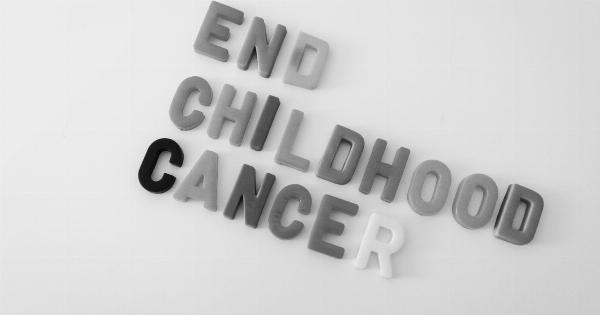Childhood cancer is a devastating and heartbreaking disease that affects thousands of children worldwide.
In recent years, there has been an alarming increase in the number of childhood cancer diagnoses, which has raised concerns among parents, healthcare professionals, and research communities. This article explores the unfavorable growth in childhood cancer diagnoses, possible factors contributing to this increase, and the potential implications for affected children and their families.
Understanding Childhood Cancer
Childhood cancer refers to various types of cancer that affect children aged 0 to 19 years. The most common childhood cancers include leukemia, brain and central nervous system tumors, neuroblastoma, Wilms tumor, and lymphoma.
While the exact causes of childhood cancer remain largely unknown, certain genetic factors and environmental exposures may play a role.
Growing Statistics
The increase in childhood cancer diagnoses is a cause for concern. According to recent studies, there has been a steady rise in the number of new cases over the past few decades.
This upward trend is particularly evident in certain types of childhood cancers, such as pediatric brain tumors and neuroblastoma. The rise in diagnosed cases demands immediate attention and further investigation into potential underlying causes.
Impact on Children and Families
A childhood cancer diagnosis can be devastating for both the child and their family. The physical, emotional, and financial burden of the disease can create long-term challenges.
The rigorous treatment regimens required for childhood cancer often result in significant disruptions to normal life, including extended hospital stays, missed schooling, and limited social interactions. Furthermore, families may face immense financial strain due to medical bills and additional expenses associated with the child’s care.
Possible Contributing Factors
Several factors are believed to contribute to the increase in childhood cancer diagnoses. While the exact mechanisms remain unclear, researchers have identified potential areas of concern:.
1. Genetic Predisposition
Genetic factors can increase a child’s susceptibility to certain cancers. Inherited gene mutations or chromosomal abnormalities may play a role in the development of childhood cancers.
Identifying these genetic predispositions can help improve early detection and treatment options.
2. Environmental Exposures
Exposure to certain environmental factors has been linked to an increased risk of childhood cancer. These factors include exposure to radiation, chemicals, pollutants, and certain lifestyle choices like smoking during pregnancy.
Further research is needed to better understand the impact of these environmental factors and develop strategies for prevention.
3. Improved Diagnostic Techniques
Advancements in medical technology and diagnostic techniques have significantly improved the early detection of childhood cancers. While this is undoubtedly a positive development, it also contributes to the observed increase in diagnoses.
Previously undetectable cases are now being identified at an earlier stage, leading to a higher overall number of cases.
4. Data Collection and Reporting
Another factor contributing to the increase in childhood cancer diagnoses is the improvement in data collection and reporting methods.
As healthcare systems become more comprehensive and efficient, accurate data on childhood cancer cases can be collected and analyzed. This helps in identifying areas of concern and directing resources towards prevention and treatment.
Research and Awareness
The rise in childhood cancer diagnoses calls for intensified research efforts to understand the underlying causes and identify effective treatment strategies.
Additionally, raising awareness about childhood cancer and its symptoms can lead to earlier detection and better outcomes for affected children.
Supporting Affected Families
It is crucial to provide comprehensive support to families affected by childhood cancer. Oncology teams, support groups, and charitable organizations play a vital role in assisting families emotionally, financially, and socially.
Ensuring accessible and affordable healthcare services can alleviate the burden on affected families and improve their overall quality of life.
Conclusion
The alarming increase in childhood cancer diagnoses is a cause for significant concern.
Understanding the contributing factors and addressing this issue requires collaborative efforts from healthcare professionals, researchers, policymakers, and the community. By prioritizing research, awareness, and support, we can strive to reduce the incidence of childhood cancer and improve the outcomes for the affected children and their families.
























